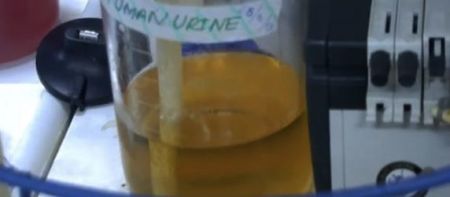A team of researchers in Bristol has successfully created a device capable of pumping human waste into the power-generating section of a self-sustaining robot.
Researchers based at the Bristol Robotics Laboratory, a joint venture between the University of the West of England and University of Bristol, have over the past decade developed four generations of EcoBots: robots that can function completely on their own, powered by electricity-generating microbial fuel cells that employ live microorganisms to digest waste organic matter and generate low-level power.
The scientists’ pioneering artificial device is modeled on the human heart and incorporates smart materials called shape memory alloys, which could be used to deliver human urine to future generations of EcoBot. By collecting waste and converting it into electricity, these robots can function autonomously.
After numerous tests on the device, the results have been presented in IOP Publishing's journal Bioinspiration and Biomimetics. It is believed that future uses of EcoBots could include their deployment as monitors in areas where there may be dangerous levels of pollution, or indeed dangerous predators, drastically reducing the need for human intervention and maintenance.
Previous research has proven the ability of these types of robots to generate their energy from rotten fruit and vegetables, dead flies, waste water, sludge and human urine.
Peter Walters from the Centre for Fine Print Research, University of the West of England, is the study’s lead author and he speculates that in future, urine-powered EcoBots could perform environmental monitoring tasks such as measuring temperature, humidity and air quality.
Adding that some EcoBots could also function as a mobile distributed sensor network, Walters went on to say that set in a city environment, these robots could re-charge their energy using urine from urinals in public lavatories, whereas in rural environments, power could generated via liquid waste effluent collected from farms.
The current generation of EcoBot's fuel cells receive their liquid feedstock via conventional motor pumps, these tend however, to be subject to mechanical failure and blockages. The new device, with an internal volume of 24.5 ml, mimics the human heart by compressing the body of the pump and forcing the liquid out, a technique made possible with the use of "artificial muscles" made from shape memory alloys, a group of smart materials that are able to 'remember' their original shape.
When heated with an electric current, the artificial muscles compressed a soft region in the centre of the heart-like pump. This caused the fluid to be ejected through an outlet and pumped to a height that would be sufficient to deliver fluid to an EcoBot's fuel cells. Once the electric current was removed, the artificial muscles cooled down and returned to their original shape with the consequence of causing the heart-pump to relax and prompting fluid from a reservoir to be drawn in for the next cycle.
A stack of 24 microbial fuel cells fed on urine were able to generate enough electricity to charge a capacitor, this in turn was used to start another cycle of pumping from the artificial heart.
Walters pointed out that the artificial heartbeat is mechanically simpler than a conventional electric motor-driven pump. By employing artificial muscle fibres to create the pumping action, it bypasses the more complex technical assembly of an electric motor.
The group's future research will focus on improving the efficiency of the device and investigating how it might be incorporated into the next generation of MFC-powered robots will be the focus of the scientists’ future research.
A video of microbial fuel cells, fed on urine, charging a mobile phone can be viewed on this YouTube posting.
Source: Science Daily
7 November 2013
Latest Articles
robotics, fuel cells
A team of researchers in Bristol has successfully created a device capable of pumping human waste into the power-generating section of a self-sustaining ro...



























